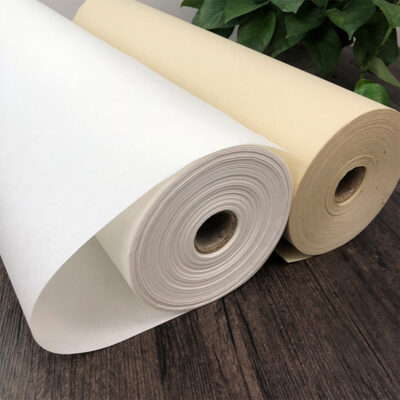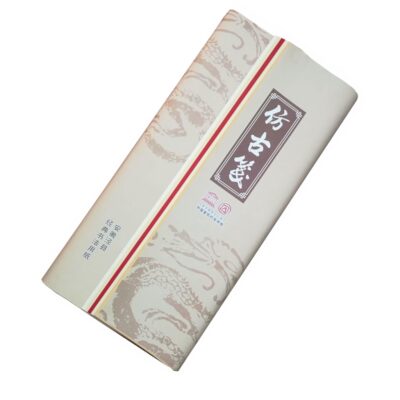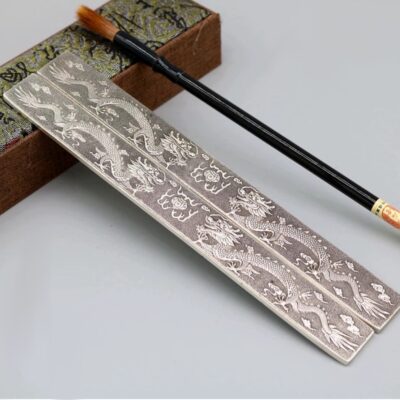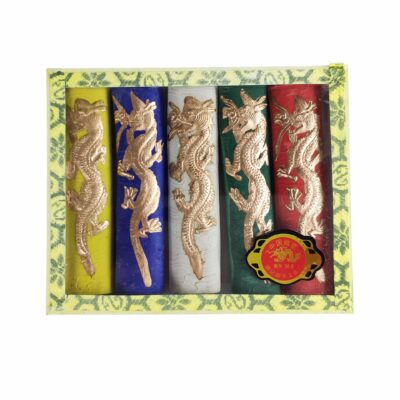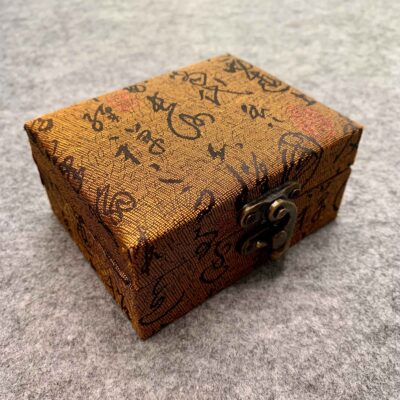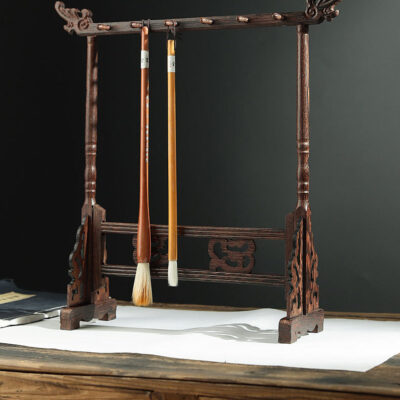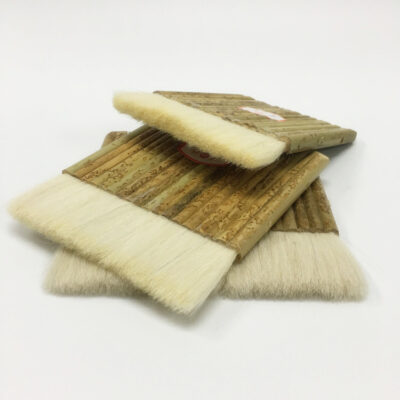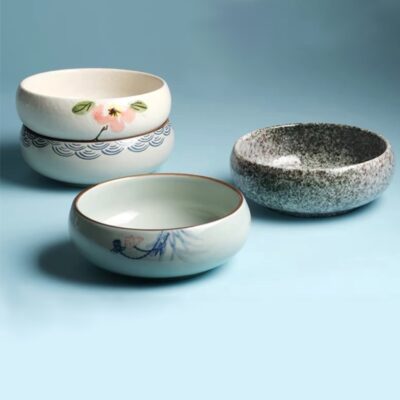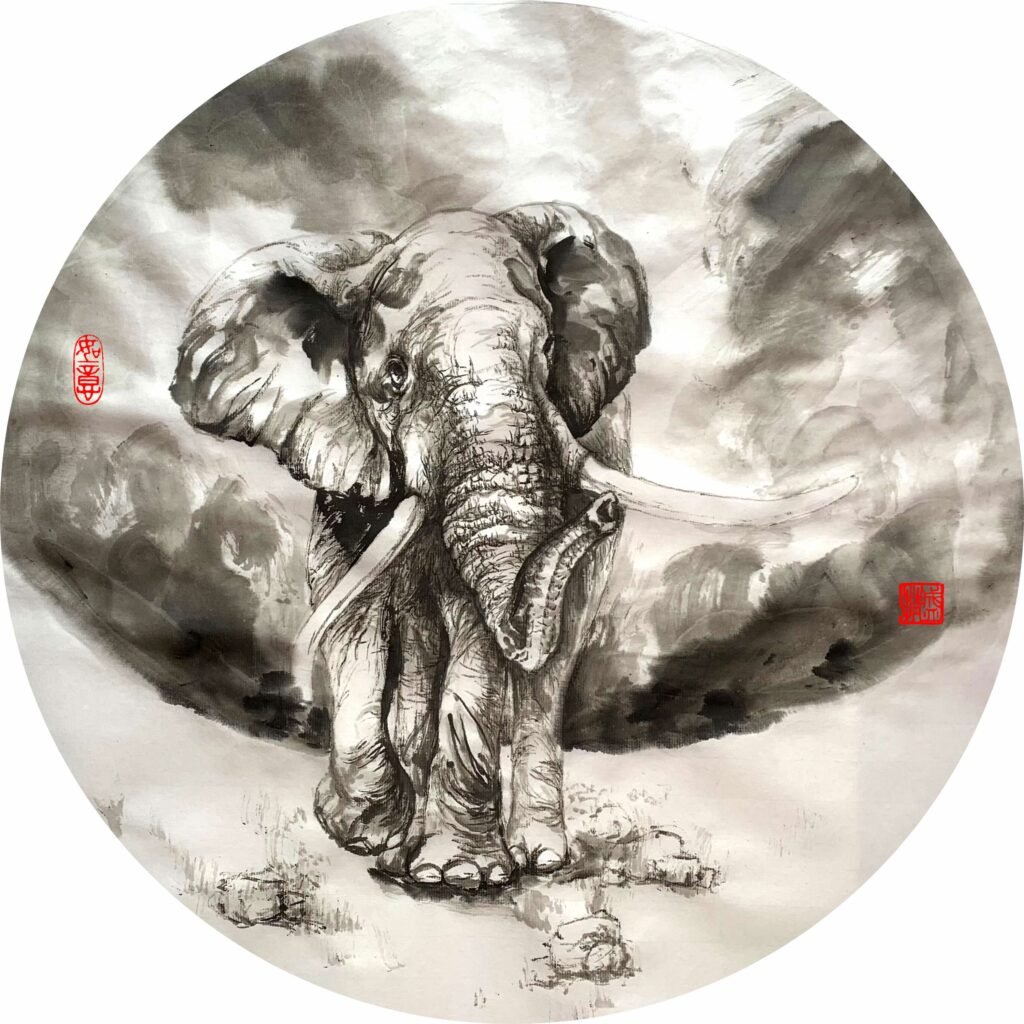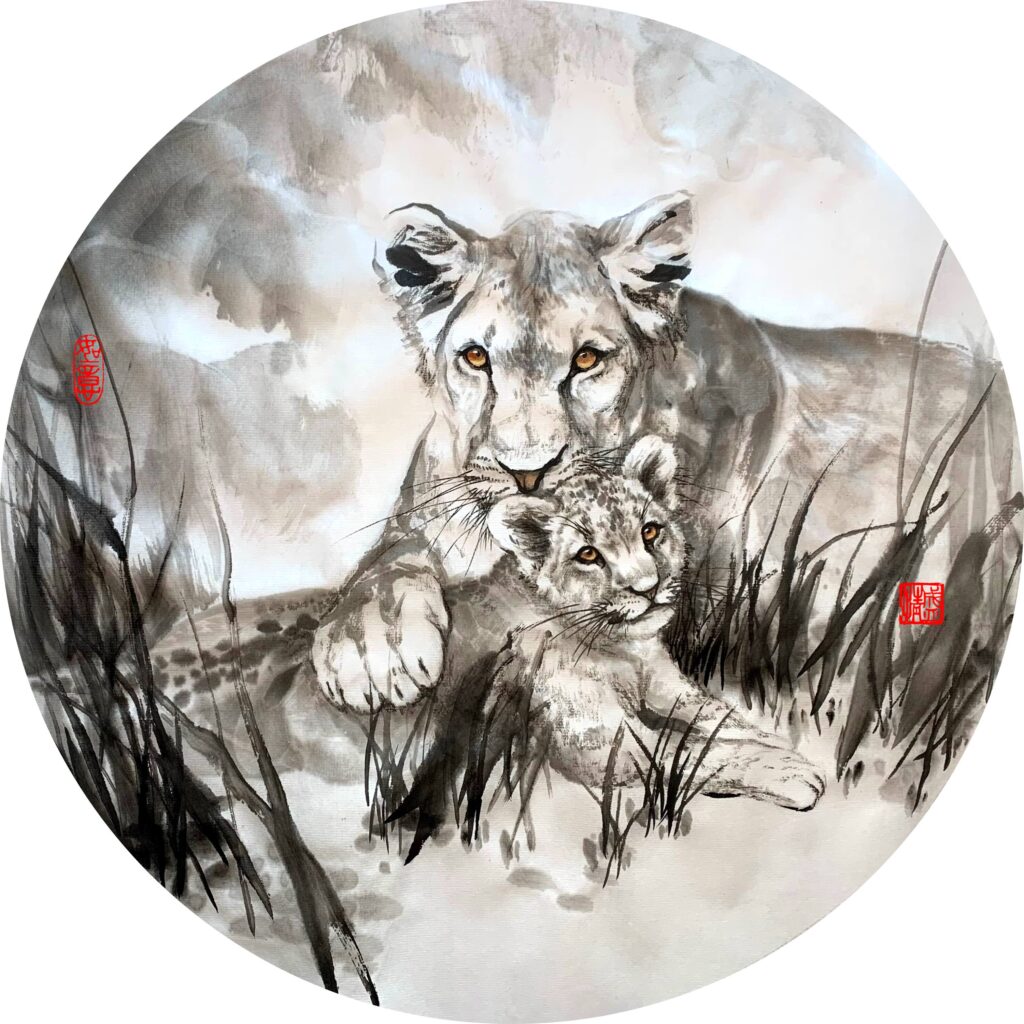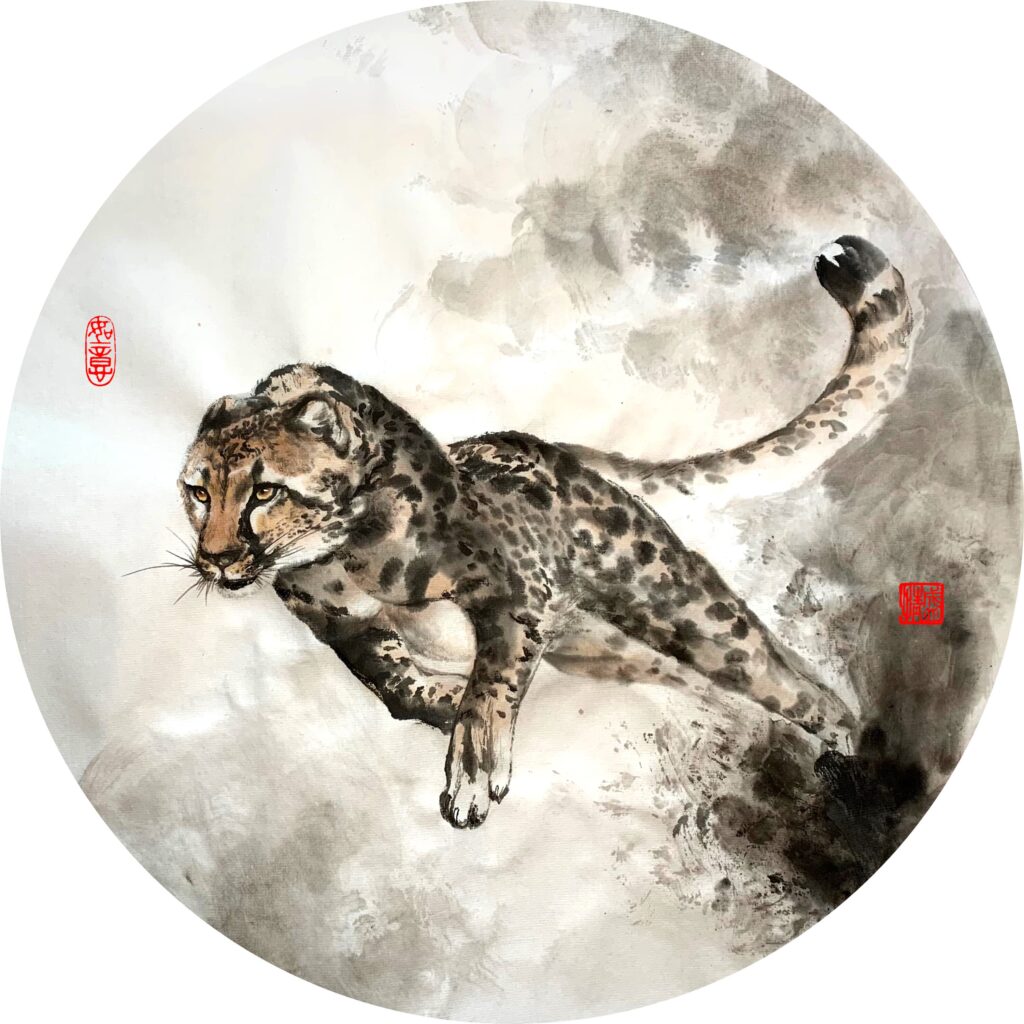
White Wolf – Oriental Ink Brush Painting
Rice Paper, 40cm x 50cm
By Fiona Sheng
@InkDifferent Studio | Brussels
Today in our live stream we focused on the wolf freehand brush painting. This was the first attempt from me, and even though the painting is not mounted yet, which makes it much flatter and more suitable for photographs, I believe this freehand wolf turned out quite alright! This is a painting of a white wolf, or arctic wolf, a subspecies of the grey wolf that lives in the high arctic tundra in North America. Such white animals in the ancient oriental culture are symbols of fortune, they are considered auspicious signs.

“A man might befriend a wolf, even break a wolf, but no man could truly tame a wolf.”
– George R. R. Martin
In fact, there are quite a few auspicious signs in the oriental culture, and there are five levels of them: the five spirits, the grand auspicious sign, the high auspicious sign, the medium auspicious sign, and the low auspicious sign. These names are easier in Chinese, two characters describing each level (五灵、大瑞、上瑞、中瑞、下瑞). Our white wolf belongs to the third level, it is a high auspicious sign.
The five spirits include Qilin, Phoenix, Turtle, Dragon, and White Tiger (some say Pi Xiu, a bear-tiger physical shape).
The Qilin is a mystical creature, known to have the head of goat, body of a deer, feet of a wolf, with scales, antlers, and the tail resembling a dragon. It is around two meters tall, lives about 2000 years, and is often associated with the bringer of children. A Qinlin is benevolent, gentle creature, but it can be rather scary when angry, and only the very virtuous people can be compared to a Qilin.
The other four auspicious signs in this level are also the four winds, the protectors of the Norther, Southern, Western and Eastern heavens.

QinLin 麒麟
The second level involves mostly natural phenomenon, especially four virtuous stars and fortunate clouds. But the natural phenomenon also includes timely snow fall, timely rain, sunlight, moonlight, northern light, frost, solar and lunar eclipses, springs, calm ocean, ancient trees blooming etc. Some emperors take such natural occurrences as a sign of blessing and recognition from the heavens. Other emperors use such signs to reinforce their status as a ruler, after all, the people generally are very impressed by these unexplainable signs!
The next level includes many white animals, and the white wolf is high on the list of being an auspicious sign, because they can only been seen by the people ruled by the most benevolent and kind emperor. On this list there is also the white deer, white fox, white bear, white ape, and white and RED rabbit – I do not suppose there were many records of it.
The second to last level includes birds. Eagle, red wild goose, white swallow, white chicken, and many more are on this list. The final level involve all kinds of plants and stones.

Auspicious Cranes
Song Dynasty, Zhao Ji, Liaoning Museum
This painting was created by the last emperor of the Northern Song Dynasty. Story has it that on the 16th day after the Spring Festival of 1112, a large flock of cranes came lingering around the palace, it was a magnificent and extremely auspicious sight. The emperor Zhao Ji, who was also a wonderful artist, excitedly recorded this image in the form of a detailed painting and complimented it with a poetry.
Artistically this painting is truly elegant, unfortunately for the nation however, merely 15 years after the creation of this painting the nation was lost to the Jin invasion, Zhao Ji (Song Hui Zong) became the very last emperor of the Northern Song Dynasty. This painting was also lost during the war and chaos. 600 years later it turned up magically – I cannot imagine what it must have been through, but auspicious signs and all their blessings presented us with an emperor who was a much better artist in the end.
Enjoy such cultural discussions? Have comments? I look forward to hearing from you!
Buy Artworks | Learn Brush Painting | Learn Chinese Calligraphy
